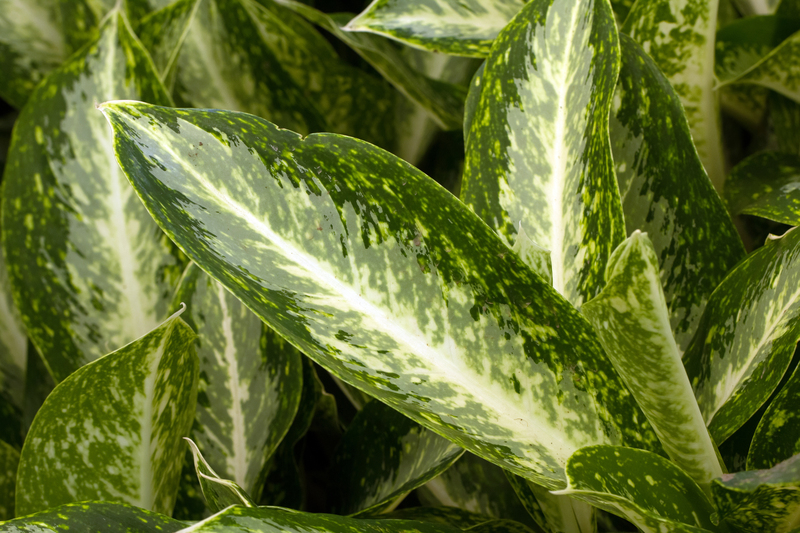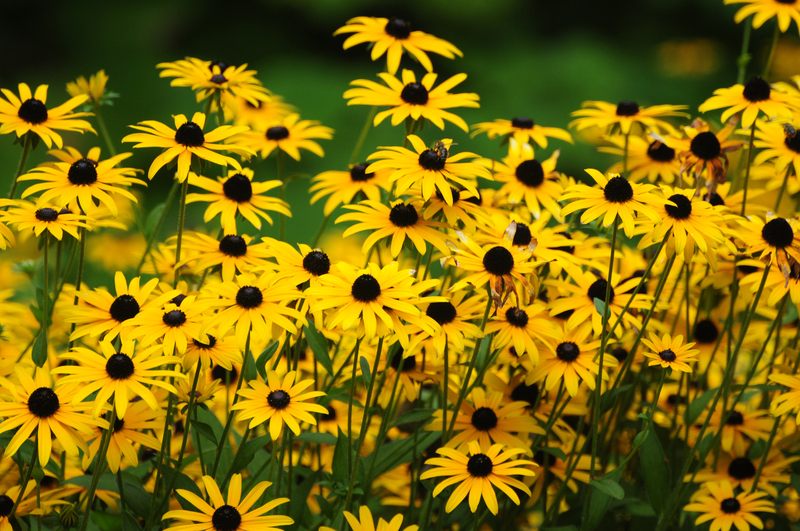Simplify Weed Management with These 3 Tips
Posted on 21/06/2025
Simplify Weed Management with These 3 Tips: A Comprehensive Guide
Weed control is a challenge for many gardeners, homeowners, and farmers. Weeds compete with desired plants for water, nutrients, sunlight, and space, often impacting crop yield or landscape beauty. However, weed management doesn't have to be an endless or overwhelming chore. In this in-depth guide, we'll show you how to streamline your weed control efforts. Read on for three practical, effective strategies to simplify weed management and enjoy a healthier, more productive garden or lawn!
Why Effective Weed Management Matters
Weeds are more than just an eyesore. They can:
- Compete for resources: Weeds often grow faster and absorb nutrients before desirable plants can.
- Harbor pests and diseases: Some weeds attract insects or act as hosts for plant diseases.
- Reduce agricultural yields: Uncontrolled weeds can dramatically decrease harvests in both home gardens and commercial fields.
- Lower property value: Weedy landscapes look neglected, potentially decreasing curb appeal.
That's why understanding weed control basics is crucial. By streamlining your approach, you not only keep your environment looking its best but also support the health of flowers, vegetables, shrubs, and grasses.

The Top 3 Tips to Simplify Weed Control
Ready to take the challenge out of controlling weeds? Discover these three science-backed and gardener-approved tips for easier, more successful weed suppression.
1. Prioritize Prevention: Stop Weeds Before They Start
The most effective way to simplify weed management is by preventing new weed growth altogether. Taking a proactive approach saves time, reduces labor, and minimizes the need for chemical herbicides. Here's how you can do it:
-
Use Mulch Generously
Mulching is a gardener's secret weapon. A 2-4 inch layer of organic mulch--like shredded bark, wood chips, straw, or leaves--blocks sunlight from weed seeds, suppressing their ability to sprout. As an added bonus, mulch helps retain soil moisture and improve soil health.
Pro tip: Focus on maintaining mulch around flowers, shrubs, trees, and vegetable garden beds where disturbance is minimal. -
Implement Landscape Fabric
Weed barrier fabric is an effective physical deterrent. Place it beneath mulch or stone pathways to further enhance weed suppression. Be sure to use a breathable material to allow water penetration but block weed emergence. -
Maintain Healthy Plant Density
Dense plantings provide living competition. Arrange your garden or landscaping beds so that desired plants can quickly fill gaps, shading out weeds and leaving little space for them to establish. For lawns, maintain a healthy turf by overseeding bare patches and following proper mowing and fertilizing practices.
Effective weed prevention is the foundation of simple, long-lasting weed management.
2. Practice Timely and Targeted Removal Techniques
When weeds do appear, dealing with them swiftly and strategically can make all the difference. By removing weeds at the right time and with the right methods, you minimize their spread and reduce future work.
-
Pull Young Weeds Early
Don't wait until weeds get established. Small seedlings are easier to remove, and they haven't yet developed the extensive root systems that make mature weeds tough to control. After rain or a deep watering, loosen the soil and gently pull weeds, getting as much of the root as possible. -
Use the Right Tools
Invest in ergonomic weeding tools, such as hoes, dandelion diggers, or weed pullers. For larger areas, consider a stirrup hoe or wheel hoe for fast, efficient weeding. These tools help disturb the soil less, reducing the chances of bringing weed seeds to the surface. -
Cut or Mow at the Right Time
For perennial weeds in lawns or fields, regular mowing or cutting can weaken plants and prevent them from seeding. Always mow before weeds flower--once they set seed, you're facing new generations of invaders.
Bonus Tip: For invasive or deeply rooted weeds like bindweed, thistle, or Bermuda grass, persistent cutting or digging reserves energy from the roots. Consistency is key--repeated removal eventually exhausts the plant's reserves.
3. Choose Herbicides Thoughtfully--If Needed
While manual and cultural practices are the cornerstone of simple weed management, sometimes targeted chemical control is necessary--especially in larger landscapes or for aggressive, persistent weeds.
-
Select the Correct Herbicide
Not all weed killers are created equal. Always identify the keywords (weed type, location, and desired plants) before choosing a product. For example, selective herbicides target specific weeds (broadleaf or grassy), while non-selective herbicides kill most vegetation, so should be used with care. -
Follow Label Directions Exactly
Applying more herbicide is not better, and misuse can harm your garden, pets, or the environment. Time applications based on weed growth stage--most are most effective on young, actively growing weeds. -
Try Organic Alternatives
For those searching for eco-friendly options, products featuring acetic acid (strong vinegar), citric acid, or essential oils can provide burn-down control for annual weeds. They work best in hot weather on small weeds but typically won't eradicate well-established pests.
Remember: Herbicides should be a last resort, not the first line of defense. Always follow integrated weed management principles to minimize reliance on chemicals and protect soil and water health.
Bonus Strategies to Keep Weed Management Simple
While the three tips above form the backbone of easy weed control, a few additional strategies can further save you time and prevent frustration:
-
Water Wisely
Irrigate only where your desirable plants are growing. Drip irrigation or soaker hoses keep surrounding weed seeds dry, reducing their chances of germination. -
Rotate Crops
In vegetable gardens, rotating crops annually disrupts weed life cycles and reduces soil-borne pests and diseases that weeds can harbor. -
Edge and Maintain Borders
Create defined, well-maintained edges between lawns, flower beds, and hardscaping. This physical barrier discourages creeping weeds from spreading into unwanted areas. -
Compost Carefully
Only compost weed-free plant material. If weeds have gone to seed or are persistent spreaders (like roots or runners), dispose of them separately to avoid reintroducing problems. -
Practice Regular Walk-Throughs
Make a habit of scanning your garden, lawn, or farm fields weekly. Early intervention is always more effective than crisis management!
Understanding Common Types of Weeds
Knowledge is power. Distinguishing the types of common weeds in your landscape will help you refine your management techniques:
- Annual Weeds: These appear, set seed, and die all in one growing season. Examples include crabgrass, chickweed, and pigweed. Prevention and early removal are most effective.
- Biennial Weeds: These complete their life cycle in two years. The first year is vegetative; the second is flowering/seed-setting (e.g., bull thistle, wild carrot).
- Perennial Weeds: These persist year after year, often regrowing from roots, tubers, or rhizomes (e.g., dandelions, Bermuda grass, bindweed). These require more persistent, targeted removal or control.

FAQs on Simple Weed Management
What is the easiest way to control weeds naturally?
Mulching is considered one of the easiest natural weed barriers. Combined with dense planting and regular hand weeding, you can keep most beds weed-free with minimal effort.
Can I use household vinegar to kill weeds?
Household vinegar may brown leaves, but it typically isn't strong enough to kill mature or deep-rooted weeds. Choose horticultural vinegar for best results, and apply carefully to avoid touching desirable plants.
How can I permanently get rid of weeds in pathways or driveways?
For gravel or paved areas, combine weed barrier fabric, regular sweeping, and, if necessary, spot applications of boiling water or non-selective herbicides. Seal cracks to limit new weed growth.
Conclusion: Take Control with Smart, Simple Weed Management Tips
Simplifying weed control doesn't mean ignoring weeds--it means adopting effective, sustainable strategies that prevent problems before they overwhelm you. With these three tips for weed management--focused on prevention, timely removal, and thoughtful chemical use--you can enjoy a greener, healthier landscape with less effort and fewer frustrations.
Consistency, not intensity, is the key to successful long-term weed control.
Start Today: Transform Your Weed Management Routine
- Mulch and plant densely to smother new weeds.
- Remove weeds early and choose appropriate tools for the job.
- Resort to weed killers only when absolutely necessary and always follow the manufacturer's instructions.
By following these tested and practical methods, you'll take the hassle out of weed control and reap the benefits of beautiful, thriving plants.
Share Your Weed Management Success!
What weed management hack has saved you the most time and effort? Share your favorite tips with our gardening community below!
Don't forget to bookmark this article for reference and revisit as you tune your own weed control strategies season after season.

